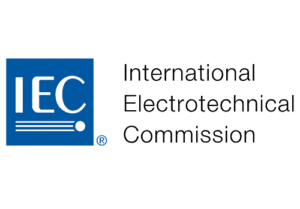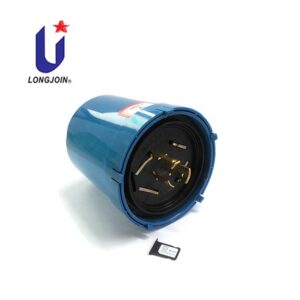What is The Function of NEMA Socket in Street Lighting?
What is NEMA socket
iamge tips: ANSI C136.41 7 PIN Prongs Base JL-241J by Shanghai Longjoin! A NEMA socket
NEMA connectors are power plugs and receptacles used for alternating current mains electricity in North America and other countries that adhere to the specifications established by the United States National Electrical Manufacturers Association. NEMA wire devices are available in current ratings ranging from 15 to 60 amperes (A) and voltage values of 125 to 600 volts (V). Different combinations of contact blade widths, forms, orientations, and dimensions result in non-interchangeable connections that are unique to each voltage, electric current carrying capability, and grounding system.
125-volt receptacles are commonly used around the world. All work with 1P to 15P sockets. NEMA 1-15P (two-pole, no ground) and NEMA 5-15P (two-pole with ground pin) plugs are used on typical residential electrical equipment, and the standard sockets are NEMA 5R to 15R.
Most of the widely used NEMA sockets are available at Shanghai Longjoin, you can check them out here.
NEMA socket to monitor street lights:
NEMA (National Electrical Manufacturers Association) is a common protocol used by smart controls to monitor and control streetlights. NEMA-compatible devices communicate and receive data via a two-way communication system, allowing them to remotely alter lighting levels, detect defects, and monitor energy use.
One of the primary benefits of NEMA technology is its capacity to accommodate many devices on a single network. This simplifies integration with current street lighting equipment and provides for scalability as the network grows.
Another advantage of NEMA is its strength and dependability. The protocol has been widely accepted in the United States and is backed by a number of manufacturers, making it a reliable and tested option.
However, NEMA has several downsides. It communicates between devices via a wired connection, which can be expensive to establish and maintain. Furthermore, NEMA is a proprietary protocol, thus it may not be interoperable with equipment from other manufacturers.
Why Shanghai Longjoin recommends NEMA socket for street lights:
Shanghai Longjoin has extensive experience attending streetlight bidding. When it comes to huge bids, a 7-pin NEMA socket is always recommended. Do you know why?

The 7-pin NEMA socket is widely utilized in street lighting systems because it provides a standard interface for communication between street lights and a central control system. The communication offered by this socket is necessary for complex street lighting systems that need capabilities to control features like dimming, photocell control, and remote monitoring.
Following are the 5 most important benefits of NEMA sockets for street lights.
- Increased energy efficiency
The 7-pin NEMA socket enables improved control of street lighting systems, resulting in significant energy savings. A good example is when due to lower energy usage, light pollution and low light levels, photocells automatically increase the intensity of street lights.
- Remote monitoring and control
The usage of NEMA connectors enables the check and balance of street lighting systems even from a distance, thereby improving maintenance and reducing downtime. Real-time monitoring of street light performance can aid in the detection and diagnosis of issues, while the ability to modify lighting levels remotely can boost energy efficiency and reduce light pollution.
- Flexibility and Scalability
The 7-pin NEMA socket’s standardized interface enables interchange between various street light manufacturers and control systems, making future upgrades and expansions easy.
- Improved safety
The installation of a 7-pin NEMA socket provides for adequate grounding of the street lighting system, increasing safety and lowering the danger of electrical accidents.
- Cost Savings
The use of a standardized interface, such as the 7-pin NEMA socket, can assist decrease costs by improving interoperability and eliminating the need for specialized solutions.
What is the function of NEMA sockets in streetlights
NEMA sockets play a pivotal role in the technical infrastructure of street lighting systems. These sockets serve as standardized interfaces, ensuring uniformity and compatibility between various street light fixtures and control devices. By adhering to NEMA standards, the industry establishes a common language for communication, allowing different manufacturers’ products to seamlessly connect.
In practical terms, NEMA sockets function as electrical connectors, providing a reliable link between the power source and the street light fixture. This standardized connection ensures that streetlights from different manufacturers can be easily integrated into a cohesive network or control system. It promotes interoperability, allowing municipalities and operators to mix and match components without encountering compatibility issues.
Moreover, NEMA sockets facilitate the implementation of advanced lighting control strategies. These strategies may include dimming, scheduling, and remote monitoring. The sockets enable the exchange of data and commands between the central control system and individual street lights, empowering municipalities to optimize energy consumption, enhance public safety, and respond dynamically to changing environmental conditions.
In essence, the technical function of NEMA sockets goes beyond mere electrical connectivity; it establishes a framework for the smart and efficient management of street lighting infrastructure. This standardization enhances the overall reliability, flexibility, and sustainability of urban lighting systems.
Conclusion:
In conclusion, the NEMA socket plays a pivotal role in the functionality of street lights, particularly in the context of smart controllers. As a standardized protocol established by the National Electrical Manufacturers Association, NEMA facilitates a two-way communication system for monitoring and controlling streetlights. Its widespread adoption in the United States attests to its reliability and robustness.
Shanghai Longjoin’s preference for the 7-pin NEMA socket in street lighting bids underscores its significance. This socket enables advanced control features like dimming, photocell control, and remote monitoring, leading to improved energy efficiency. The ability to adjust lighting levels based on ambient conditions not only saves energy but also mitigates light pollution.
Moreover, the 7-pin NEMA socket provides flexibility and scalability by ensuring interoperability between different manufacturers and control systems. This standardized interface enhances future upgrades and expansions of street lighting systems. Additionally, the socket contributes to improved safety through proper grounding, reducing the risk of electrical hazards.
While NEMA technology offers substantial benefits in terms of energy efficiency, remote monitoring, and cost savings, its reliance on a wired connection and proprietary nature pose challenges. Nevertheless, the advantages it brings to the realm of street lighting make it a trusted and proven solution for creating smarter, more efficient urban lighting infrastructures.
External links:
https://en.m.wikipedia.org/wiki/NEMA_connector






